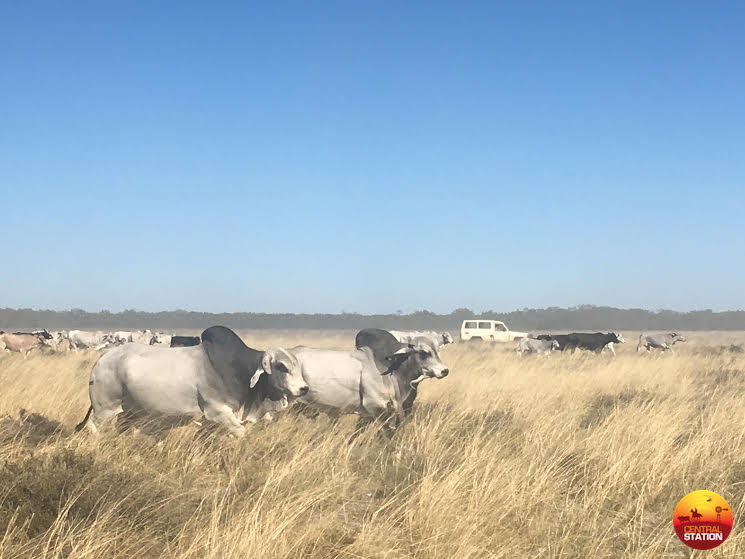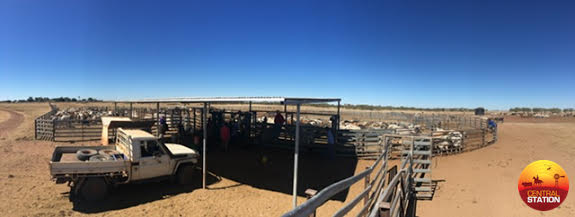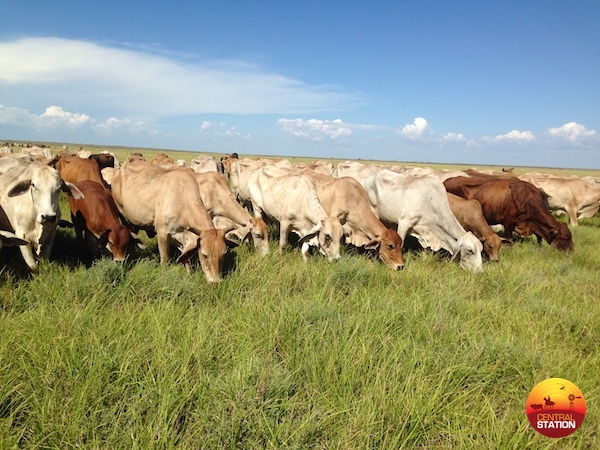Up ‘n’ out
Host: Anna Plains Station
Written by Helen Campion – Station Owner/Manager, Anna Plains Station.
The sound of the alarm to get the camp moving at 5.10am sometimes comes around too quickly for a few members of the crew. Others have been smart and gone to bed early the night before. However, all are present for a 5.30 am breakfast prepared by the station cook. Breakfast is usually eaten quietly, often before the sun has risen.
6am and it’s time for the Livestock Manager to allocate the crew their jobs for the day. At the morning meeting, everyone is told that mustering is on the agenda. The crew drive to the chosen paddock and await the helicopter. It may take up to an hour for the crew to drive out to the paddock. Once the helicopter arrives, it works with the utes to bring the mob to the yards. It can be a hot and dusty process, but very satisfying to have the cattle all mobbed up and walking calmly to the yards. Once the cattle are all in and yarded, the helicopter departs from the station. The crew have put out hay in the yards for the cattle and leave them to mother up overnight. The staff drive back to the homestead and have earned a light refreshment before dinner. After the evening meal they then slip away to catch up on some sleep before yet again a 5.10 am alarm. The next day’s workload entails processing and drafting.
 Herd bulls.
Herd bulls.
“Weaner bull, wet cow, weaner heifer, heifer calf, bull calf” are a few of the calls used to draft the mob that has come in from the paddock. “Herd bull” is the call from the livestock manager. He is the king of the herd. He stands tall and impressive, hopefully bought with good temperament.
The day at the yards is busy. The crew are now veterans and have perfected the skills necessary to complete the yard work. If you think working in the yards is easy, you can think again. It’s often hot and dusty and almost always is a very long day.
Smoko is usually taken sometime between 9 and 10am while lunch and afternoon tea is all part of the day. Sometimes the timing is dependent on when the Livestock Manager thinks it’s appropriate to stop. The bellowing of the wet cows looking for their calves lessens as the draft goes on until the mob has finished being drafted. A sigh of relief from the crew is heard when the bush cattle are let out of the yards and walked home. The weaners and dry cows are kept in the yard to be processed the next day.

The sun sets as we drive back to the homestead. The dinner is ready and waiting for the crew. As time passes, the staff numbers drop off as everyone has gone to bed. They fall asleep quickly, and remain asleep until their alarm clocks wake them for yet another day working in the yards.
Processing weaners and pregnancy testing is the next day’s job. The weaners are then sorted into keepers or cattle for sale. All dry cows are checked to see if they are pregnant. If they are, the next generation of calves are felt. The dry (barren) cows will be sold to leave more grazing room for others.
The whole muster can take a couple of days. It is dependent on the number of head brought in during the muster. To know that the cattle are ready for export, the cows are in calf and holding condition going back to their paddock always brings a smile to our face. After all, another day spent with the cattle is another day in paradise.

